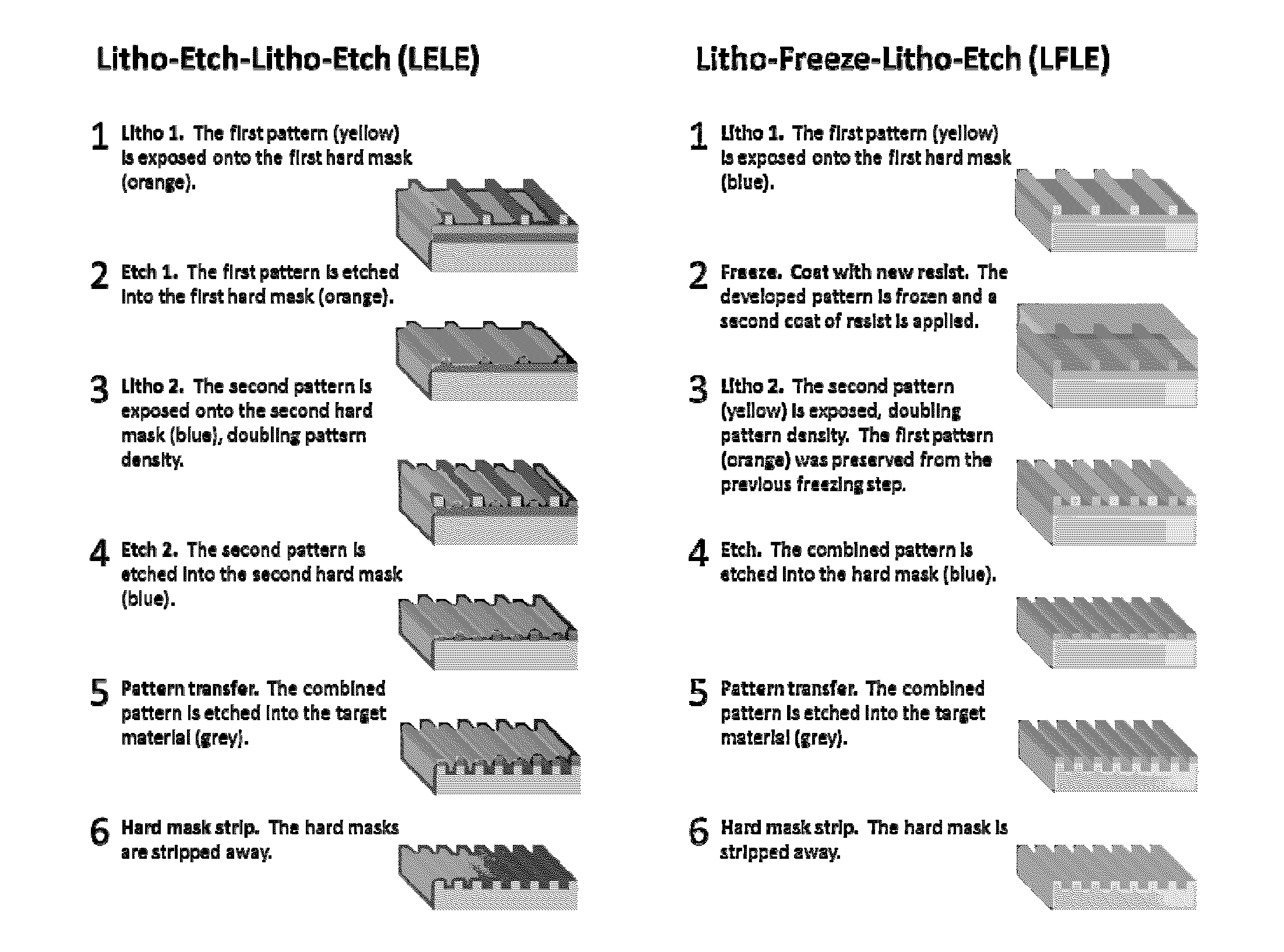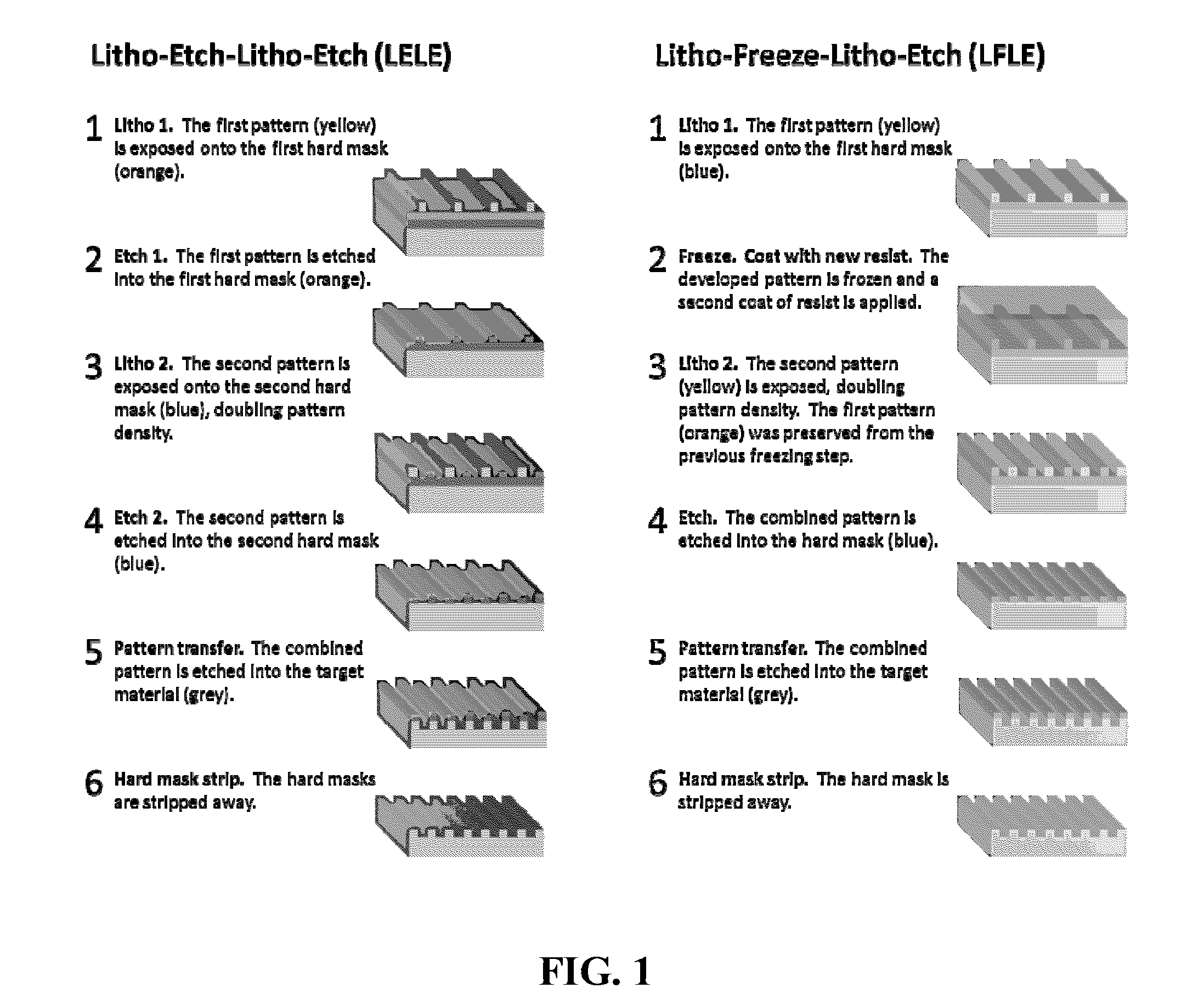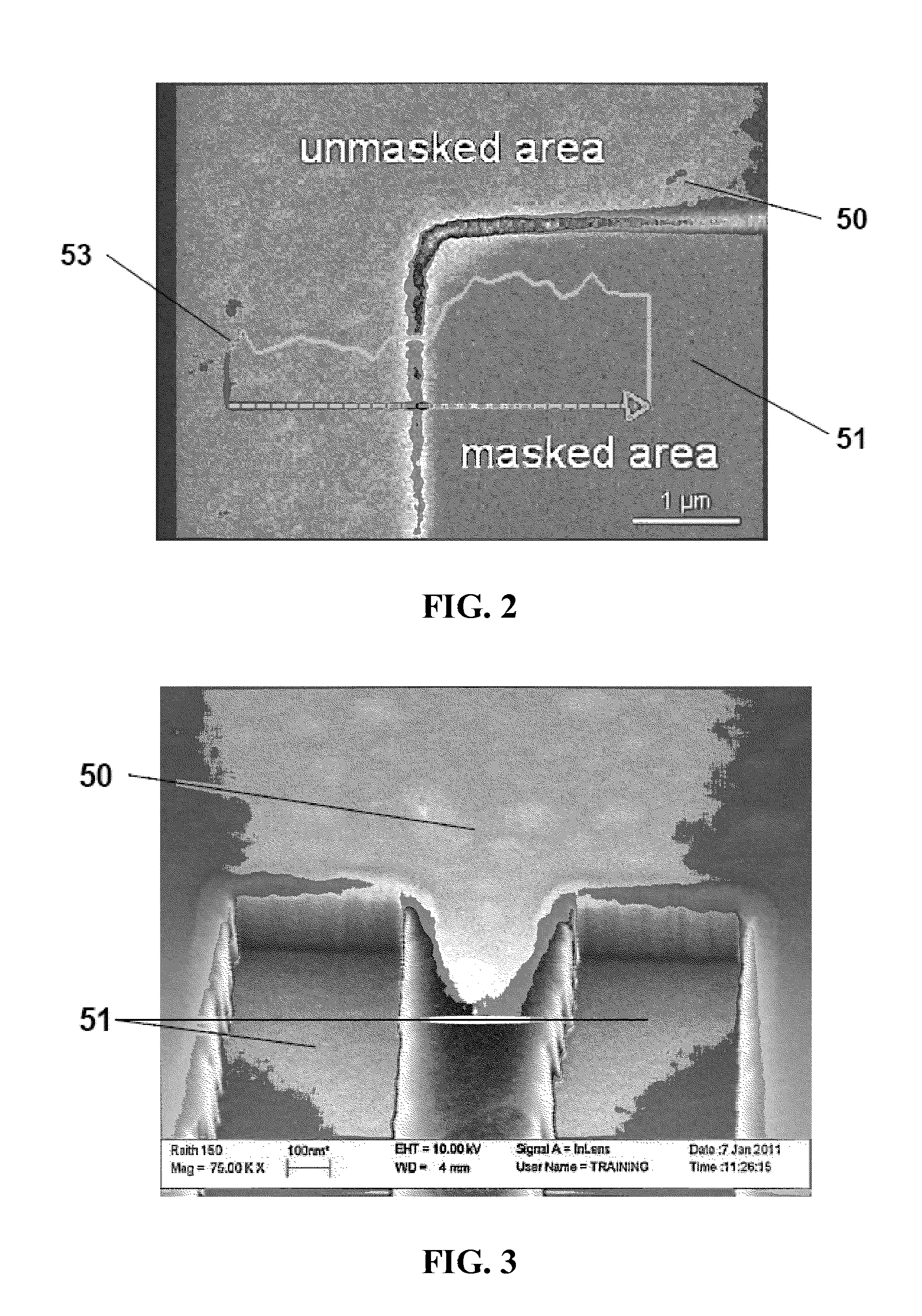Sequential Infiltration Synthesis for Enhancing Multiple-Patterning Lithography
a lithography and multiple-pattern technology, applied in the field of photolithography, can solve the problems of reducing reducing the quality of lithography, so as to increase the plasma etch resistance, reduce the number of steps, and improve the effect of lithography quality
- Summary
- Abstract
- Description
- Claims
- Application Information
AI Technical Summary
Benefits of technology
Problems solved by technology
Method used
Image
Examples
examples
[0047]In order to demonstrate the properties of a substrate modified with SIS prior to lithography, an SIS-patterned PMMA resist layer was created.
[0048]With reference to FIGS. 4A-4D and FIG. 5, the PMMA resist layer 201 is applied (step 101) to a substrate 202 such as a silicon substrate. In various embodiments, spin coating may be used to apply the resist layer 201 to the substrate 202; however, other techniques may also be used. Next, a pattern 203 (shown in FIG. 4B) may be applied to the resist layer (step 102). Patterning of the resist layer 201 may be accomplished by a variety of processes known in the art including electron beam exposure, photolithography and polymer self-assembly processes such as block copolymer. In various embodiments, selected areas of the PMMA resist layer are exposed to an electron beam or photons to form the pattern 203. The resist layer 201 is then developed (step 103) using chemical developers such as methyl isobutyl ketone and isopropyl alcohol (MIB...
PUM
| Property | Measurement | Unit |
|---|---|---|
| wavelength | aaaaa | aaaaa |
| wavelength | aaaaa | aaaaa |
| width | aaaaa | aaaaa |
Abstract
Description
Claims
Application Information
 Login to View More
Login to View More - R&D
- Intellectual Property
- Life Sciences
- Materials
- Tech Scout
- Unparalleled Data Quality
- Higher Quality Content
- 60% Fewer Hallucinations
Browse by: Latest US Patents, China's latest patents, Technical Efficacy Thesaurus, Application Domain, Technology Topic, Popular Technical Reports.
© 2025 PatSnap. All rights reserved.Legal|Privacy policy|Modern Slavery Act Transparency Statement|Sitemap|About US| Contact US: help@patsnap.com



